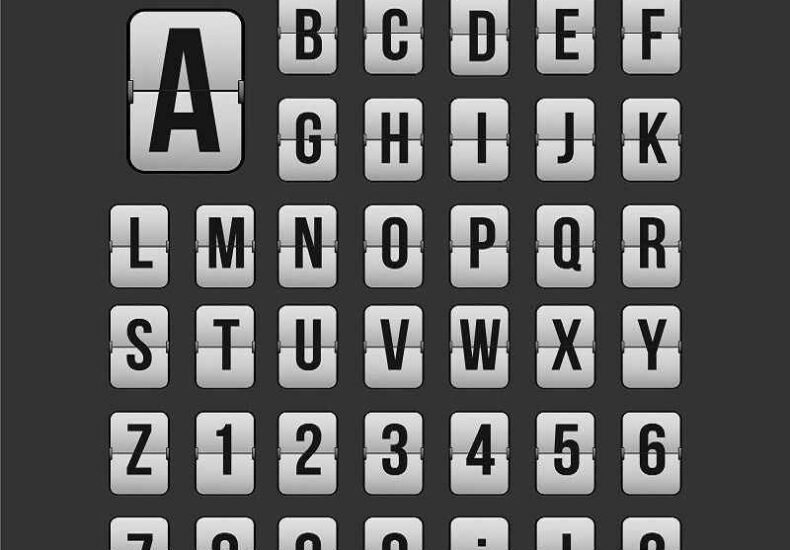
Exploring Unique Alphabet Fonts for Creative Designs
In terms of typography, fonts are not just letters—fonts create mood, express personality, and make designs memorable. In the enormous universe of typefaces, alphabet=20jmf4zhbci fonts are a distinct category. They combine artistic creativity with classic letterforms, making them ideal for attention-grabbing designs.
Whether you’re a graphic designer, marketer, or hobbyist, understanding these fonts can elevate your work. This article will explore what makes them special, where to find them, and how to use them effectively—without overwhelming your audience.
Table of Contents
ToggleWhat Are Alphabet=20jmf4zhbci Fonts?
In contrast to run-of-the-mill system fonts like Arial or Times New Roman, alphabet=20jmf4zhbci fonts are crafted with an unmistakable artistic flair. They tend to feature unorthodox shapes, ornamentation, or freehand styles that render them visually arresting.
Some typical characteristics of these fonts are:
Eccentric letterforms – Letters can have dramatic curves, pointed edges, or irregular strokes.
Ornamented additions – Swashes, dots, or inserted patterns inside characters.
Handmade look – Simulating brushstrokes, calligraphy, or graffiti.
These fonts are not suitable for long blocks of text. Rather, they excel in headlines, logos, posters, and social media images where creativity is the focus.
Why Should You Use These Fonts?
Typography is a key element in branding and design. The correct font can convey emotion immediately—whether it’s elegance, playfulness, or rebellion. Here’s why alphabet=20jmf4zhbci fonts are worth considering:
1. They Make Your Design Stand Out
In a world filled with generic fonts, employing a distinctive typeface helps your work stand out. For instance, an old-fashioned font can provide a café menu with a retro feel, whereas a futuristic font is appropriate for tech brands.
2. They Strengthen Brand Personality
Fonts evoke unconscious associations. A bold, angular font can express strength, whereas a fluid script evokes elegance. Selecting the appropriate alphabet=20jmf4zhbci font aids in reinforcing your brand voice.
3. They Stick to Contemporary Design Trends
Custom typography is common in most contemporary designs as they aim to have a lasting identity. Whether through social media ads or packaging, distinctive fonts assist brands in being current.
Yet, there is a drawback—using too many decorative fonts damages readability. In moderation, with the support of plain fonts for body content, they perform their best.
Read Also: Luuxly.com
Where Can You Discover These Fonts?
If you’re searching for alphabet=20jmf4zhbci fonts, a few websites provide good-quality options:
1. Free Font Websites
Google Fonts – A trusted source for free, web-friendly fonts.
Dafont – Extensive selection of experimental and artistic fonts.
FontSpace – Excellent for unusual, designer-uploaded fonts.
2. Premium Font Marketplaces
Creative Market – Carefully curated fonts by independent designers.
MyFonts – Extensive collection of commercial typefaces.
Envato Elements – Subscription-based unlimited downloads.
Always review the licensing agreement before commercial use of a font. Some free fonts are for personal use only.
How to Effectively Use Alphabet=20jmf4zhbci Fonts
Having access to these fonts is only the beginning. Proper use of them keeps your design both beautiful and useful.
1. Use Them with Neutral Fonts
The error of using ornamental fonts everywhere is tempting. Instead, use them with plain, simple fonts such as Helvetica or Roboto. This establishes balance—your headings stand out, while body text remains readable.
For instance:
Headline: A bold, creative alphabet=20jmf4zhbci font.
Subheading & Body: A clean sans-serif font.
2. Prioritize Readability
Certain creative fonts compromise on readability for style. If your text is not easy to read, it’s for nothing. Experiment with your font in various sizes and backgrounds before deciding.
3. Match the Font to Your Brand’s Tone
A whimsical, frothy font suits a kids’ brand but won’t suit a law firm. Consider the feeling you wish to create:
Elegance? Use a thin, flowing script.
Boldness? A heavy, blocky font.
Vintage feel? A retro serif or typewriter-style font.
4. Play with Spacing and Effects
Occasionally, tweaking letter spacing (kerning) or applying light shadows can add punch to a font. Just don’t overdo effects—less is more often best.
Real-World Applications of These Fonts
To see them in action, let’s examine some real-world examples:
1. Logo Design
Numerous brands apply custom lettering to logos. For example, Coca-Cola’s signature script font is well recognized. Selecting a proper alphabet=20jmf4zhbci font can provide your logo with similar memorability.
2. Social Media Graphics
Interesting fonts work well for Instagram, Pinterest, and advertising. A stylized, bold font in a quote graphic will be more engaging.
3. Posters and Flyers
Events like music festivals or art exhibitions often use artistic fonts to set the mood. A grunge-style font fits a rock concert, while a sleek modern font suits a tech conference.
Common Mistakes to Avoid
While these fonts offer creativity, misusing them can backfire. Here’s what to watch out for:
1. Using Too Many Fonts in One Design
Stay at two or three fonts maximum—one decorative, one neutral. Multiple styles cause visual confusion.
2. Disregarding Contrast
If your font becomes invisible from the background, it’s a failure. Have sufficient contrast between text and background colors.
3. Selecting Style Over Substance
A font may be looking groovy but is a fail in readability. Always test first before finalizing.
Final Thoughts on Alphabet=20jmf4zhbci Fonts
Typography is a strong design tool, and alphabet=20jmf4zhbci fonts have unlimited creative potential. For branding, social media, or print, they make your work pop.
The secret is balance—utilizing them strategically while considering readability. Test, experiment, and discover the ideal font that fits your vision.
For more articles; visit our website “techinshorts“.
Archives
Calendar
| M | T | W | T | F | S | S |
|---|---|---|---|---|---|---|
| 1 | 2 | 3 | 4 | 5 | ||
| 6 | 7 | 8 | 9 | 10 | 11 | 12 |
| 13 | 14 | 15 | 16 | 17 | 18 | 19 |
| 20 | 21 | 22 | 23 | 24 | 25 | 26 |
| 27 | 28 | 29 | 30 | 31 | ||
Leave a Reply